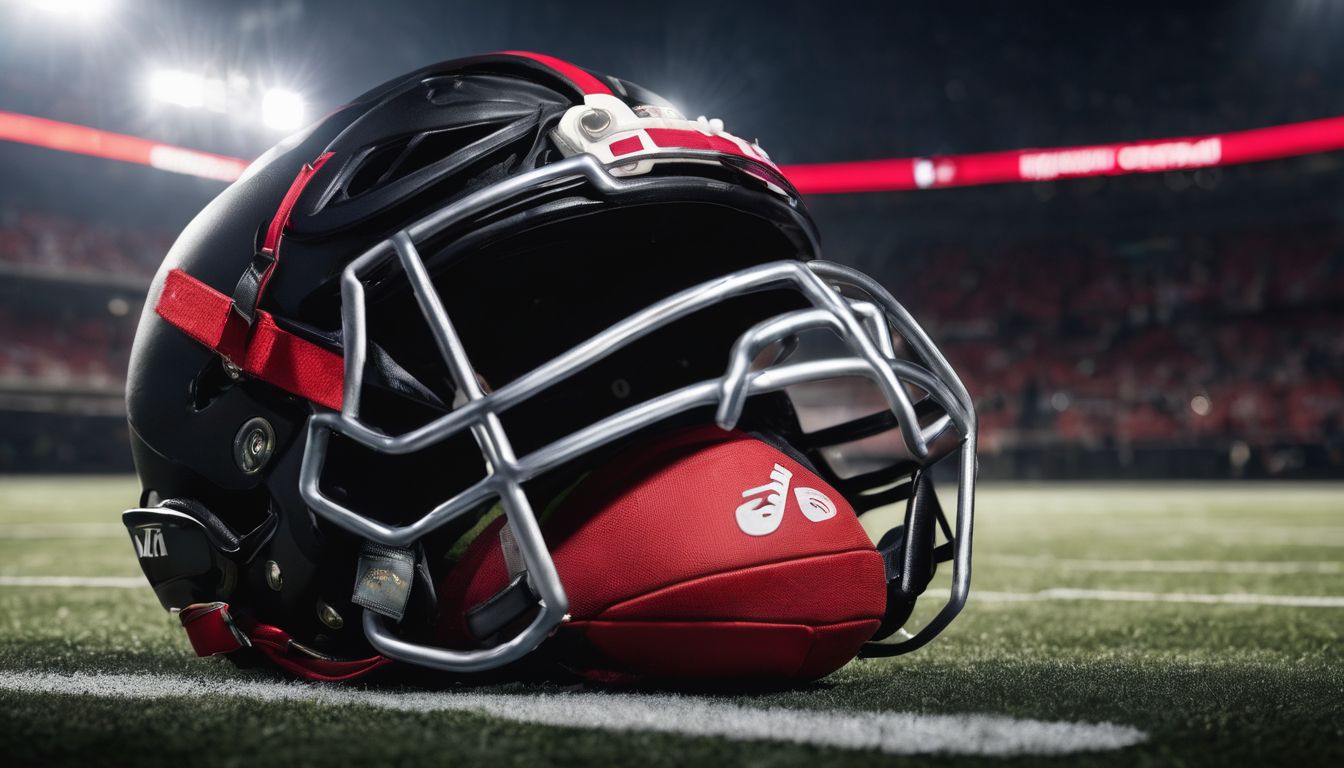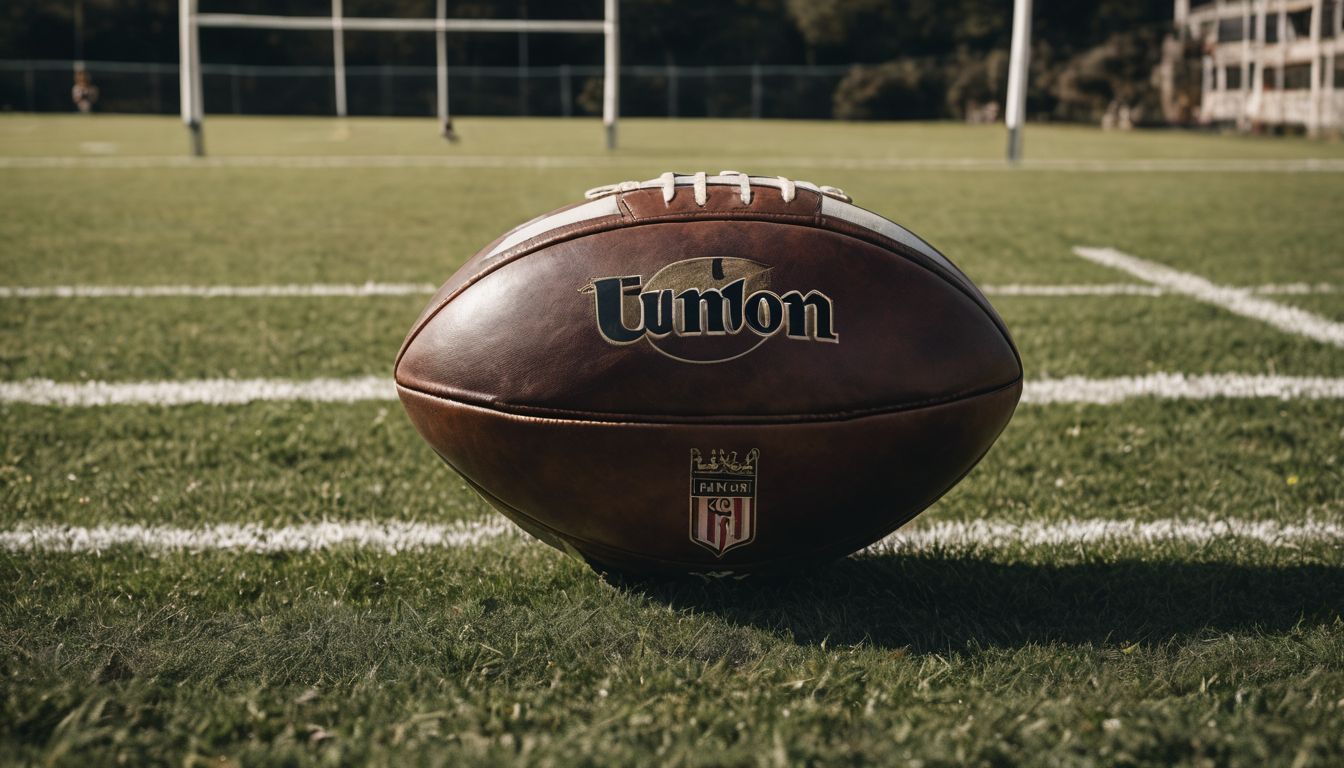Confused about the clash of rugby codes? You’re not alone. Rugby splits into two exciting games: Union and League, each with its own rules and quirks. This article lights up the key differences to settle debates and grow your understanding of both sports.
Dive in for a thrilling exploration!
Key Takeaways
- Rugby Union teams have 15 players, while Rugby League has 13, affecting the pace and strategy of each game.
- In scoring, tries earn five points in Union but only four in League; both codes allow for a two – point conversion after a try.
- Tackling rules diverge: Union involves rucks with contested possession, whereas League features set restarts where the tackled player rolls the ball back with their foot.
- The offside rule in Union requires players to be behind the last foot in a ruck or maul, while in League they must be behind the point of tackle when play is restarted.
- Globally, Rugby Union enjoys greater popularity and hosts widely recognised competitions like the Six Nations and World Cup; conversely, Rugby League is more regionally popular particularly in Australia and England.
History of Rugby Union and Rugby League
Rugby Union and Rugby League both emerged from the same roots, tracing back to the 19th century in England. The split between the two forms of rugby began in 1895 due to a dispute over player pay.
Clubs in Northern England broke away from the Rugby Football Union, forming their own league which allowed players to be compensated for missing work. This new entity eventually became known as Rugby League.
As time progressed, each code developed its own set of rules and identity. While they shared common ground with scoring tries and conversions, distinctions grew more apparent. The number of players changed: Rugby League teams fielded 13 players while their union counterparts had 15 on the pitch.
Their evolution continued into separate international competitions: Six Nations showcasing top-tier rugby union talent and State of Origin highlighting intense rugby league rivalries.
Today, despite their divergent paths, both remain beloved by fans around the globe for their distinct flavor of fast-paced action and strategic play.
Key Differences in Rules and Gameplay
The number of players on the field differs between Rugby Union and Rugby League, with 15 players in union and 13 in league. Additionally, there are variations in tackle and ruck techniques, scoring systems, and possession and offside rules between the two sports.
Number of players (15 in union vs 13 in league)
Rugby union and rugby league differ in the number of players on each team. Rugby union is played with 15 players per side, while rugby league teams consist of 13 players. This impacts the flow and strategy of the game significantly, as having two fewer players in a rugby league match allows for more space and can lead to faster-paced action compared to the larger teams in rugby union matches.
In terms of player distribution, both sports have specific roles such as forwards, backs, and halfbacks. However, due to the variation in numbers, different formations are used strategically within each code.
This creates distinctive playing styles that contribute to the unique appeal of both versions of rugby.
Tackle and ruck techniques
Rugby union and rugby league both involve specific tackle and ruck techniques. In rugby union, players can contest possession following a tackle by forming a ruck when at least one player from each team are on their feet and over the ball, using their arms to grip onto teammates.
While in rugby league, after a tackle is made, the tackled player must play the ball with his foot to initiate the next phase of play. This difference affects how players approach tackles and rucks in each code.
In rugby union, players aim to compete for possession by binding onto their teammates in a structured manner during a ruck formation. Conversely, in rugby league after every tackled player plays the ball with their foot behind them while standing upright or kneeling down as opposed to wrestling for control over the ball as seen in rugby union.
Scoring (try worth 5 points in union, 4 in league)
In rugby union, a try is awarded five points and can be followed by a two-point conversion. On the other hand, in rugby league, a try scores four points with an additional two-point conversion opportunity.
The scoring variations contribute to the distinct strategies and gameplay dynamics in each code, influencing how teams approach their offensive tactics. While both sports maintain the excitement of scoring tries and conversions, the differing point values create unique nuances that shape the overall flow and outcome of matches.
The difference in try values between rugby union and rugby league not only affects the on-field tactics but also adds to the contrasting appeal of each sport for fans worldwide. This variation serves as one of many factors that contribute to the individual qualities and characteristics that distinguish these two codes from one another on a global scale.
Possession and offside rules
Rugby union and rugby league have distinct differences in possession and offside rules. In rugby union, a player can only pass the ball backward to maintain possession, while in rugby league, players can pass the ball both forward and sideways.
Offside rules also vary between the two codes – in rugby union, players must stay behind the hindmost foot of their teammate during open play, whereas in rugby league, players need to be behind the last feet of a tackled player when play restarts.
The possession and offside rules in both sports are crucial elements that set them apart. A good understanding of these rules is essential for players and fans alike to appreciate the nuances of each code.
Cultural and Organisational Differences
Rugby Union and Rugby League have different cultural backgrounds, with union being more dominant at the international level and having a professional history, while league has strong roots in certain regions and historically been amateur.
The popularity of each sport also varies, affecting ticket availability for fans.
International dominance and professional vs amateur backgrounds
Rugby union has larger international dominance, with a more widespread following and participation. It is played professionally at the highest levels, attracting top athletes from around the world.
In contrast, rugby league often has a stronger presence in specific regions or countries and is not as widely embraced on an international scale. Historically, rugby union was considered an amateur sport while rugby league transitioned to professionalism earlier on.
This distinction in professional backgrounds influences each code’s organisational structure and approach to the game.
Popularity and ticket availability
Rugby union typically enjoys a higher level of popularity and global recognition compared to rugby league. The Rugby World Cup for union, which is one of the most prestigious events in the sport, attracts massive attention from fans worldwide.
On the other hand, while rugby league has a strong following in specific regions such as Australia and England, it generally lacks the same international appeal as its counterpart.
As a result, ticket availability for major rugby union matches tends to be more competitive and in-demand compared to rugby league events.
Notable Variations Around the World
Rugby Sevens has gained popularity for its fast-paced and high-scoring games, while Rugby Union is making strategic moves to expand in America. Meanwhile, Rugby League has found a strong following in France, with the sport being increasingly supported and cultivated.
Rugby Sevens
Rugby Sevens is a fast-paced and exhilarating variation of rugby union, played with seven players on each team rather than the traditional 15. Known for its dynamic gameplay and high-scoring matches, Rugby Sevens has gained popularity globally, especially since being included in the Olympic Games.
The shorter match duration of just 14 minutes (7 minutes each half) coupled with open-field play makes it an action-packed spectacle that appeals to both die-hard fans and newcomers to the sport.
Players in Rugby Sevens need exceptional speed, agility, and endurance due to the fast-paced nature of the game. With fewer players on the field, there’s more space for explosive runs and daring attacking moves.
Rugby Union in America
Rugby union in America has been steadily growing in popularity, with the sport gaining traction across the country. The United States national rugby union team, known as the Eagles, competes at an international level and is gaining recognition for its competitive performance.
Major League Rugby (MLR) has also seen expansion in recent years, with more teams joining the competition and attracting a wider fan base. This surge in interest has led to increased participation at grassroots levels and a growing number of rugby clubs throughout the nation.
Notably, some former American football players have transitioned to rugby union due to its physicality and strategic gameplay. This crossover has brought attention to the sport from traditional American sports fans and enriched the talent pool within US rugby.
Rugby League in France
France boasts a rich history in rugby league, with the sport enjoying a passionate following and strong presence. The French Rugby League Championship has been instrumental in promoting the game nationally, showcasing top-level talent and attracting dedicated supporters.
Additionally, the annual Lord Derby Cup serves as an important platform for clubs to compete and display their skills, further amplifying interest in rugby league across France.
French rugby league has also seen success on the international stage, with the national team consistently participating in major tournaments such as the Rugby League World Cup. This exposure has helped cultivate a fervent fan base while elevating the profile of rugby league within the country.
Conclusion
In conclusion, the differences between rugby union and rugby league are evident in various aspects, including gameplay rules and cultural influences. The number of players, scoring system, and tackle techniques distinctly set them apart.
Additionally, their global popularity and organisational structures contribute to their unique identities within the world of sports. Despite their shared origins, both rugby codes have evolved into separate entities with dedicated followers around the globe.
FAQs
1. What are the main differences between Rugby Union and Rugby League?
The main differences between Rugby Union and Rugby League lie in the number of players, with Union having 15 per side and League having 13, as well as variations in rules like scrum engagements and how tackles are counted.
2. How does the scrum work differently in each rugby code?
In a Rugby Union scrum, eight players from each team lock together, while a Rugby League scrum uses only six players – both aiming to gain control of the ball but with different techniques and rules.
3. Can you switch positions easily between Rugby Union and Rugby League?
Switching positions is not always straightforward due to the tactical differences; some players may adapt quickly while others may find it challenging when moving from one code to another.
4. Is there more scoring in one type of rugby compared to the other?
Yes, typically, there is more scoring in a game of Rugby League compared to Union because of differing tackle count rules which can lead to faster play and hence more opportunities for points.
















